Drácula Blu-ray Movie
HomeDrácula Blu-ray Movie 
Universal Studios | 1931 | 103 min | Rated G | No Release Date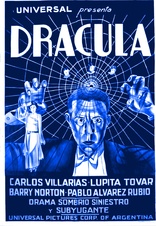
Price
Movie rating
7.5 | / 10 |
Blu-ray rating
| Users | 0.0 | |
| Reviewer | 3.5 | |
| Overall | 3.5 |
Overview
Drácula (1931)
Spanish language version of the legendary vampire staking his claim on a British estate in search of new blood filmed in the same sets at night as Bela Lugosi's <i>Dracula</i> with a different cast and crew.
Starring: Carlos Villarías, Lupita Tovar, Barry Norton, Pablo Álvarez Rubio, Eduardo Arozamena (I)Director: George Melford, Enrique Tovar Ávalos
| Horror | Uncertain |
| Foreign | Uncertain |
| Drama | Uncertain |
| Fantasy | Uncertain |
Specifications
Video
Video codec: MPEG-4 AVC
Video resolution: 1080p
Aspect ratio: 1.35:1
Original aspect ratio: 1.2:1
Audio
Spanish: DTS-HD Master Audio 2.0 Mono
Subtitles
English
Discs
50GB Blu-ray Disc
Single disc (1 BD)
Playback
Region A (B, C untested)
Review
Rating summary
| Movie | 4.5 | |
| Video | 3.5 | |
| Audio | 3.5 | |
| Extras | 2.0 | |
| Overall | 3.5 |
Drácula Blu-ray Movie Review
A surprise from start to finish...
Reviewed by Kenneth Brown December 1, 2012Take a moment and imagine what modern horror would be without Universal Pictures. Without founder Carl Laemmle and his vision for the future of cinema, or his son Carl Laemmle Jr., who inherited the keys to the studio kingdom in 1928, when talkies were rapidly displacing silent films and promising groundbreaking new strides in moviemaking and the movie-going experience. Without early horror pioneers like Tod Browning, James Whales, Karl Freund, George Waggner or Jack Arnold. Without iconic creature actors Bela Lugosi, Boris Karloff, Claude Rains, Lon Chaney, Jr., Elsa Lanchester or Ben Chapman. Without Dracula, the indispensable 1931 classic that left a more lasting mark on vampire movies and lore than any other vampire film before or after (save Nosferatu). Or Frankenstein, which pushed boundaries, shocked audiences and has been received with overwhelming enthusiasm ever since. The Mummy, bold in its atmosphere and unforgettable in its tragic romance. The Invisible Man, which features some of the most astonishing special effects and perhaps one of the most unnerving depictions of mounting madness of the era. The Bride of Frankenstein, a complex, wickedly funny, altogether unpredictable sequel that in many regards surpasses its predecessor. The Wolf Man, a once-chilling character drama that examines the frailty of man and the beast within. Phantom of the Opera, though more a twisted love story than a traditional horror picture, a film that nevertheless caused some theaters to stock smelling salts in in the event that a moviegoer fainted upon the removal of the Phantom's mask. Or Creature from the Black Lagoon, which frightened audiences above the water and below with a scaly monster unlike any they had seen before. Needless to say, modern horror, and really the genre in whole, would be completely different than what we know.
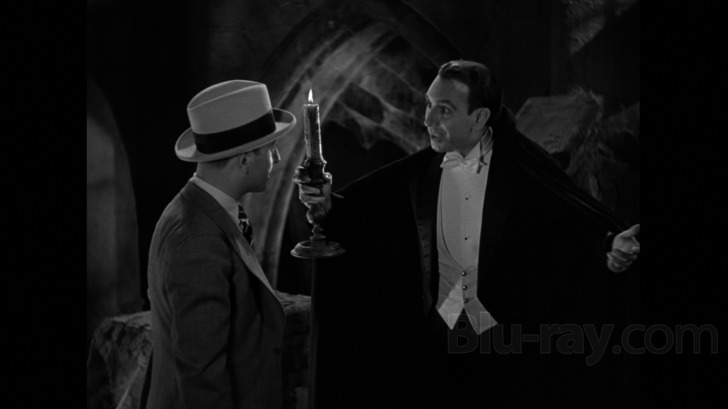
More than a mere dub, the Spanish version of Dracula -- director George Melford's Drácula -- is one of the unexpected treats in the 8-disc, 9-film Universal Classic Monsters Collection, and one of the more unexpected early horror masterpieces from Universal. Shot simultaneously with the English-language Bela Lugosi classic (in the late evenings, with the same sets and props the American cast and crew used earlier in the day), the Spanish version of the film stars Carlos Villar as Conde Drácula, Barry Norton as Juan Harker, Lupita Tovar as Eva, Pablo Alvarez Rubio as Renfield and Eduardo Arozamena as Van Helsing. But, interestingly, it's the Spanish cast that reigns supreme. The Spanish script that's more faithful to Bram Stoker's text (with a number of scenes that didn't make the cut in the American version), more frightening on the whole, and more bold in its depiction of passion and sexuality. The Spanish director who seems more ahead of his time. And the Spanish Count who provides the greater chills. Lugosi may have become the face of Dracula, but Villar is the more resolute and revered king of vampires. Don't skip past Drácula. Don't mistake it for a lesser film. This is the classic '30s adaptation of Stoker's novel to be seen, and the clear masterpiece of the two.
Drácula Blu-ray Movie, Video Quality 
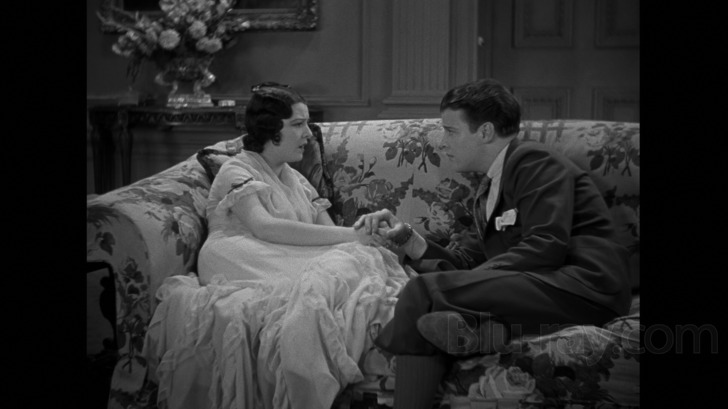
Alas, Drácula's restoration isn't as consistent as that of Dracula, although for good reason. Some of the original Drácula negatives have become terribly degraded and damaged over the years, leaving the preservation and restoration team at Universal with an extremely difficult task. In most scenes, it was a challenge they happily accepted, producing results akin to their incredible work on Dracula. A few scenes, though, were beyond seamless repair, meaning everything from tears to vertical lines to other source-based anomalies are still very much present and accounted for. It isn't too distracting, particularly since the 1080p/AVC-encoded presentation is technically sound, but it does come as something of a disappointment; not with Universal, but with the realities of the situation. Fortunately, every other aspect of the image is thoroughly impressive, from the level of detail that's been preserved to the crisp edges, refined grain, rich black levels, lovely midrange grays and overall impact of the picture. Perfection would have been preferred, of course, but considering the many, many obstacles the Universal team had to surmount, the presentation is, for better or worse, something of a miracle.
Drácula Blu-ray Movie, Audio Quality 

Universal's two-channel DTS-HD Master Audio Mono Drácula track is much more comparable to its American counterpart, and quite remarkable on the whole. Its noise floor is a bit hard to ignore, sure. But it's important to keep in mind that prior to the completion of the Drácula and Dracula restorations, the original audio sources were hobbled by even nastier noise floors, complete with harsh harsh hissing that took a toll on the clarity of the dialogue and effects. That clarity has been restored and rejuvenated, dramatically so, despite the fact that the results aren't exactly ideal. That said, there's little, if anything, the film preservationists working on the project could have done to improve the audio further. Theirs was a legitimate case of tough, lesser of two evils decision making. To their credit, they chose wisely. Cinephiles and purists will be more than willing to ignore the noise floor -- as they should -- especially when it's really the only price to pay for what is easily the best the film has ever sounded.
Drácula Blu-ray Movie, Special Features and Extras 
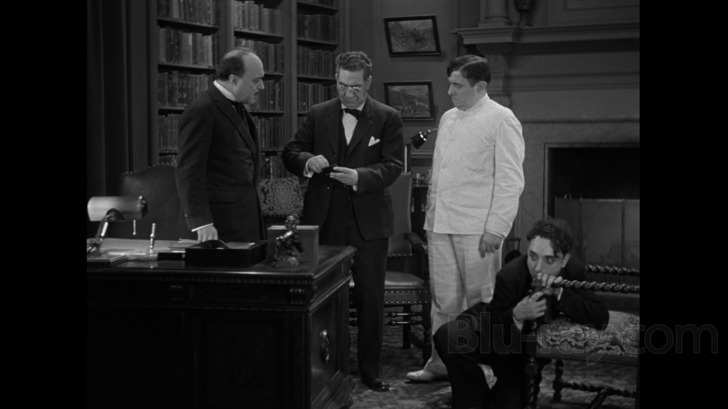
Only four extras devote time to Drácula, although film historian David J. Skal touches briefly on its existence and the differences between the two versions in his audio commentary.
- Dracula: The Restoration (HD, 9 minutes): "The whole point of the process is to not let the viewer know we were here." This look at the restoration of the movie from its original nitrate film and audio elements is an essential one. Every catalog release -- every single one -- should merit a featurette of this sort, if only to demonstrate how challenging restorations are handled. It needn't be long, just as informative and layman-friendly as this one.
- Introduction to the Spanish Version (HD, 4 minutes): Lupita Tovar Kohner provides an introduction to the Spanish version of the film, which features a different cast rather than a simple dub, and was shot simultaneously with the English-language version.
- The Road to Dracula (SD, 35 minutes): Carla Laemmle (niece to Universal founder Carl Laemmle) hosts this trip back in time and behind the scenes of Dracula and Drácula, complete with interviews with film historians, modern filmmakers and other notable horror notables.
- Dracula Archives (SD, 9 minutes): Movie posters, campaign art, production stills and other images.
Drácula Blu-ray Movie, Overall Score and Recommendation 
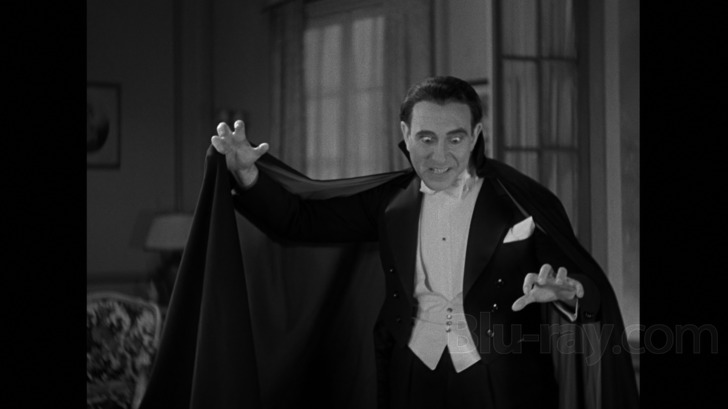
It would be all too easy to skip right over Drácula, assuming it to be nothing more than a Spanish dub of the original Universal horror classic. But don't be in such a hurry. Drácula is a more remarkable film than Dracula, with richer performances, more engrossing storytelling and a firmer grasp on Bram Stoker's characters and text. Its restoration isn't as ideal, no, but its technical video transfer is quite strong and its DTS-HD Master Audio mono mix is excellent. Don't pass this one by. Comparing Drácula to Dracula is worth the price of admission, and one of the more rewarding studies of early horror you're likely to undertake.
Similar titles
Similar titles you might also like
(Still not reliable for this title)

Dracula
Includes "Drácula"
1931

Dracula's Daughter 4K
1936

The Wolf Man 4K
1941

The Invisible Man 4K
1933

Son of Dracula 4K
1943

Frankenstein 4K
1931

The Mummy 4K
1932

The Bride of Frankenstein 4K
1935

Werewolf of London
1935

Son of Frankenstein
1939

Frankenstein Meets the Wolf Man
1943

Horror of Dracula
Dracula / Warner Archive Collection
1958

The Vampire Lovers
Collector's Edition
1970

Dracula A.D. 1972
1972

Dracula Has Risen from the Grave
1968

Bram Stoker's Dracula 4K
25th Anniversary Edition
1992

Kiss of the Damned
2012

Byzantium
2012

Lemora: A Child's Tale of the Supernatural
1973

House of Dracula 4K
1945
